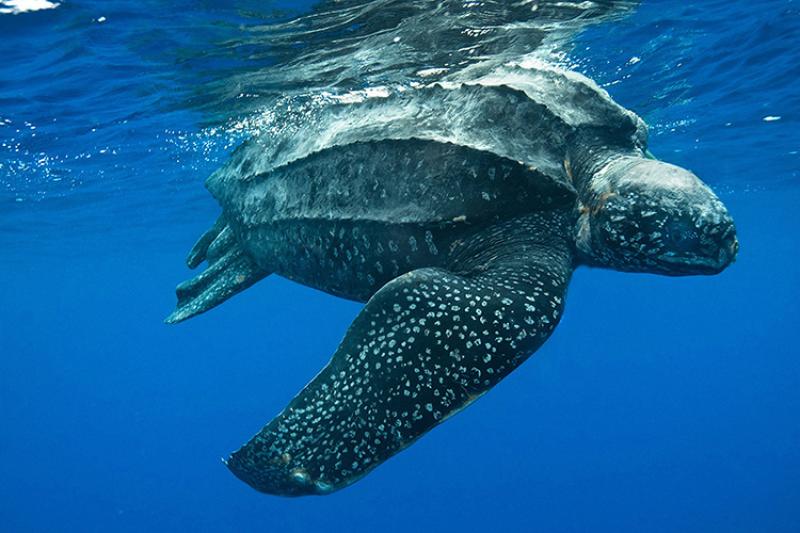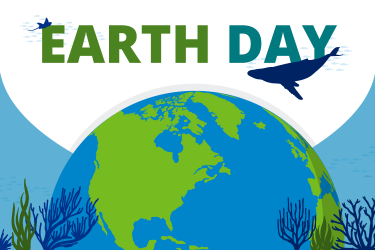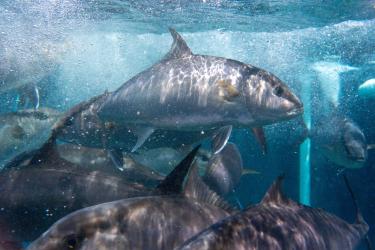In 2023, we are celebrating a major conservation milestone: the 50th anniversary of the Endangered Species Act. This landmark legislation was signed into law in 1973 with bipartisan support, and echoed society’s growing awareness of the importance of biodiversity and environmental protection. Fifty years later, we have a valuable opportunity to reflect on our conservation achievements, while committing to address the continuing challenges we face today and into the future.
The more than 160 marine or anadromous ESA-listed species under NOAA Fisheries’ jurisdiction are some of the world’s most at-risk, including:
- North Atlantic right whales
- Atlantic salmon
- White and black abalone
- Hawksbill sea turtles
- Smalltooth sawfish
- Hawaiian monk seals
All ESA-listed species play integral roles in their ecosystems. Extinction is forever—once species are gone, their ecological, economic, and intrinsic values are lost.
Conserving Endangered and Threatened Species
The Endangered Species Act has put many species on the path to recovery. Since it was enacted, no marine or anadromous species have gone extinct.
Our partners are important collaborators in the protection and recovery of ESA-listed species. Conservation groups, academic institutions, tribal nations, and federal, state, and local governments work with NOAA Fisheries to minimize threats to listed species and foster their recovery.
Through advanced scientific knowledge, improved technology and tool development, and strong collaborations with innovative partners, we have made significant strides in slowing down or reversing the population decline of several species.
North Atlantic Right Whales
On April 24, I had the honor of visiting the Center for Coastal Studies in Provincetown, Massachusetts for the inaugural Massachusetts Right Whale Day. I was able to join the research crew on Cape Cod Bay where I saw a North Atlantic right whale mother-calf pair—”Medusa” (#1208) and her 6-month-old calf. One of the first calves of the most recent season, these two were first spotted off St. Catherine’s Sound, Georgia in early December 2022. “Medusa” is at least 42 years old, and this is her seventh documented calf. As a successful reproductive female, she plays an outsized role in the recovery of this species.
In the last decade, there have been more North Atlantic right whale deaths than births. Entanglement in fishing gear and vessel strikes are the two biggest threats to whales. Mothers are critically important to the recovery and conservation of the endangered North Atlantic right whale species. Every calf counts. Seeing a North Atlantic right whale calf in-person was a moving moment for me, and we are on the right path as we work to implement our North Atlantic Right Whale Road to Recovery.
Sea Turtles
All sea turtles found in U.S waters are listed under the ESA. Their populations have declined due to hunting, poaching, habitat destruction, and fisheries bycatch. Fortunately, working with industry, researchers at NOAA have developed innovative turtle-excluder devices. This tool reduces sea turtle bycatch and promotes sea turtle conservation by mitigating harmful interactions between sea turtles and trawl fishing gear. Modern TED designs are 97 percent effective in excluding sea turtles from shrimp trawls. The shrimp fishery, which once faced severe restrictions and closures to protect endangered sea turtles, has continued to operate and thrive while simultaneously saving the lives of sea turtles by using TEDs.
White Abalone
Recovery efforts take many forms, and it was inspiring to meet with our partners who produce and rear thousands of healthy white abalone in labs and aquariums throughout California. These endangered marine snails were the first marine invertebrate listed under the ESA. Over the past 5 years, thousands of white abalone have been outplanted along the California coast where they will live, grow, and hopefully reestablish self-sustaining populations and contribute to healthy kelp forests ecosystems. Our scientists use new techniques to study, protect, and restore this species. We also work with our partners to ensure that regulations and management plans are in place to reduce poaching.
Looking to the Future
Today we face unprecedented challenges. Climate change is causing warming oceans, ocean acidification, prey shifts, and other rapid environmental changes. Increased human use and exploitation of natural resources can disturb or destroy habitats that species depend on to survive. Since endangered and threatened species are already at-risk, additional threats from climate or habitat changes make their survival more precarious.
Through the science-based framework of the ESA, NOAA Fisheries takes a proactive approach to protect these species and their habitats against threats, including:
- Working with partners to improve our scientific understanding of climate-related impacts on protected species
- Using the best available science to inform our recovery and conservation efforts and to enhance species’ resilience and adaptation strategies
- Collaborating with partners on our “Species in the Spotlight” initiative to strategically focus attention and resources on nine ESA-listed species at great risk of extinction
- Mitigating threats to ESA-listed species through use of innovating technologies, new approaches to management, and habitat restoration
Please join me in celebrating the first 50 years of the Endangered Species Act! It will take all of us working together to ensure species continue to thrive over the next 50 years and well into the future. That work is of great consequence to the health of the habitats that sustain and support us all.
Janet Coit
NOAA Fisheries Assistant Administrator







